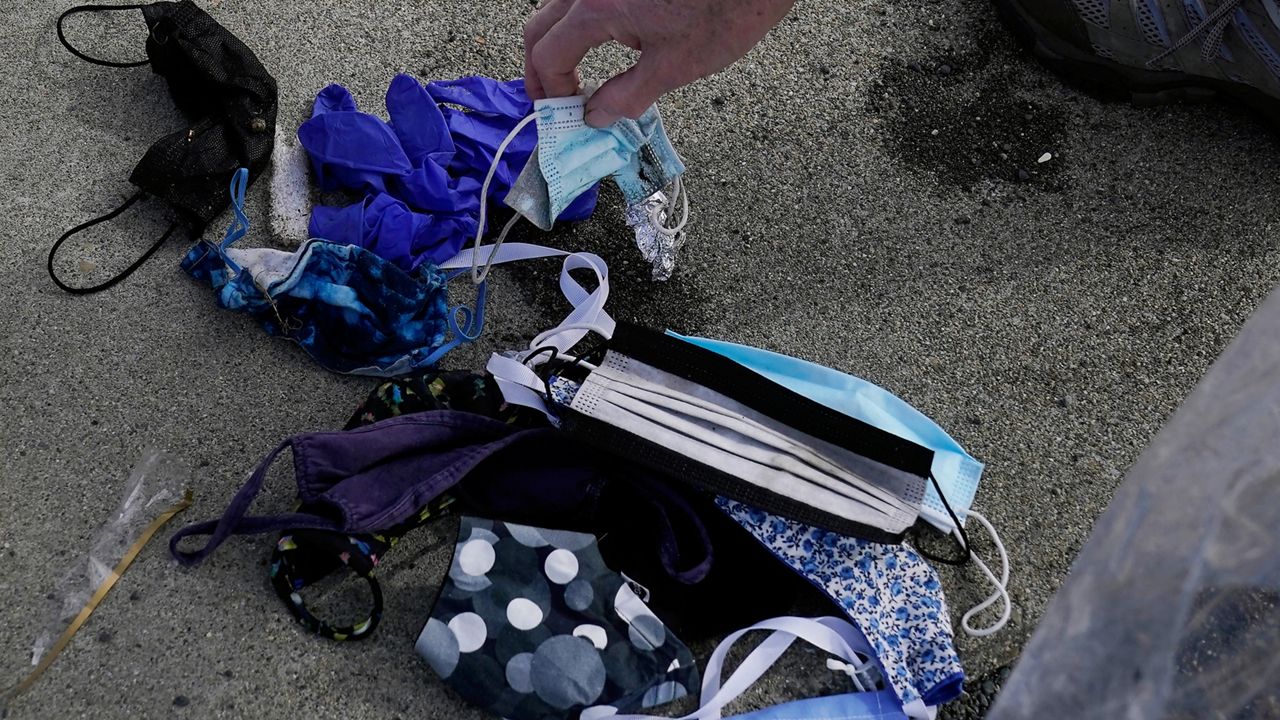Tens of thousands of pounds of pandemic-related materials like plastic masks, gloves and face shields have been discarded into the ocean since the beginning of the pandemic, according to a report published in the journal Proceedings of the National Academy of Sciences.
As cases of COVID-19 began to rise in 2020, so too did the need for personal protection equipment (PPE), much of which was made from single-use plastics.
According to researchers from Nanjing University and University of California San Diego, approximately 8 million tons of pandemic-related plastics have been generated since the start of the pandemic — around 25,000 tons of which are now in the global ocean.
The vast majority, around 87%, of excess pandemic-related plastic waste is produced by hospital systems, whereas personal PPE waste accounts for just a little over 7% of global excess plastic.
Researchers also found that the “surge in online shopping” led to an increased demand for plastic packaging material, although package waste makes up only 4% of the pandemic-era plastic in the global oceans. Test kits make up an early smaller fraction of plastic waste at .3%.
While the study showed that pandemic epicenters struggled most with disposing plastic waste, researchers said the amount of mismanaged plastic waste “does not follow the case distribution.”
Instead, the trends indicate that developing countries struggle to properly treat plastic waste. Countries like the United States and Spain had better waste management systems in place before the pandemic, and therefore were better able to dispose of plastic PPE when cases remained high.
Around 46% of pandemic-related plastic waste originated in Asia; Europe made up 24%, and North and South America made up 22%.
But thanks to ocean currents, weather, and other factors, scientists estimate there will be wide-ranging geographical impacts in the future, with pandemic-era plastics expanding to the open ocean within three to four years.
“The released plastics can be transported over long distances in the ocean, encounter marine wildlife, and potentially lead to injury or even death,” researchers wrote in part, adding: “Some cases of entanglement, entrapment, and ingestion of COVID-19 waste by marine organisms, even leading to death, have been reported. The plastic debris could also facilitate species invasion and transport of contaminants including the COVID-19 virus.”
Experts estimate that another 9,000-10,000 tons of pandemic-related plastic will make its way into the oceans by the end of the year.
Scientists proposed a number of solutions to mitigate the spread of single-use plastics in waterways, stressing that COVID-19 epicenters in developing nations must learn to better manage and treat plastic waste.
“Globally public awareness of the environmental impact of PPE and other plastic products needs to be increased,” they added. “Innovative technologies need to be promoted for better plastic waste collection, classification, treatment, and recycling, as well as the development of more environmentally friendly materials.”



